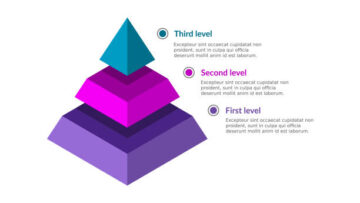You can choose from a wide range of products. Paper clips are easy. Easy dish sponges. These products are at the other end of the spectrum. Health insurance is at the opposite end of the spectrum and seems to be a long way away.
Kate Bundorf is an associate professor at Stanford School of Medicine, with a courtesy appointment to the Stanford Graduate School of Business. It can be challenging to understand the complexity of health insurance plans. As a result, many people choose inferior plans, which lead to higher costs and inefficient markets. Bundorf says, “We wanted to find out what tools people could use to make better decisions.”
Using an algorithm, she developed an online tool with Maria Polyakovaopens in a new Stanford School of Medicine window and Ming Ta-Sealeopens in the University of California San Diego. The algorithm matched the medical records of Medicare Part-D enrollees to the best insurance options available for prescription drugs. The algorithm was more effective in changing to a new plan for those who used it. The process of selecting health insurance was also rated as more satisfying even though they spent more time doing it.
Make Insurance Choices Easy and Better
Participants were randomly assigned to one of two treatment groups or a control group. The control group had to use existing Medicare online resources to choose one of 22 available prescription plans. Conversely, the algorithm provided support to treatment groups by automatically matching information from medical records with prescription drug plans. Both treatment groups could view an online table providing individualized cost analysis for each project. The algorithm also produced an “expert score” (from 0 to 100) for each project. The three best options appeared at the top.
The treatment, which included “expert” suggestions and cost estimates, was more effective. The participants in this treatment chose to change plans 36% higher than the control group. Bundorf says, “We found evidence that the intervention had a positive impact on people’s behaviour. This was especially true when we provided expert advice.”
These changes resulted in $270,000 of savings for the consumers. While this number may appear small, it is based on a small group of 316 patients who could access the expert’s recommendation. If the same results were extrapolated across the nearly 25,000,000 people enrolled in Medicare Part D, and assuming the same rate of participation that Bundorf and colleagues observed in this experiment, savings of around $680 million would be possible. It is especially noteworthy that the tool cost less than $ 1.8 million to develop.
The Policy World
Two critical factors moderate the policy implications of this finding, even though they are apparent.
A small percentage of the eligible participants chose to participate. Of the nearly 30,000 invited people, only 1,185 participated in the study. Those who did participate were also more tech-savvy than the others. Researchers worry that the people who could have benefited the most from the study may not have chosen to participate.
Polyakova says that the people who interacted with the algorithm had sophisticated tastes; they were shoppers actively seeking information. This suggests that offering the tool on the internet won’t be enough to help people make better choices. A more proactive approach will be needed.
Second, the demographics of the study as a group are not representative of the entire Medicare population. Bundorf and colleagues worked with the Palo Alto Medical Foundation on the experiment. This means those who participated lived in a wealthy and technologically advanced part of the United States. It is not known if the results will be generalized. Polyakova says that it’s possible for people who live in places with lower incomes or less exposure to such tools to behave differently.
A win for the algorithm (and a warning)
Bundorf and colleagues weren’t sure that the intervention would impact behavior. A lot of evidence shows that giving people information does not influence their outcomes. The results of this study point out one clever design: by having two different treatments, researchers were able to measure the impact of information alone – showing the total cost to the consumer of each plan – as well as expert advice paired with transmission.
Polyakova says that advice is different from information. When people receive advice, they gain new knowledge and change their perception of the product’s features.
She notes that this has significant and complex implications. Microsoft Excel, for example, is a neutral piece of software. But this isn’t always the case when it comes to modern algorithms. The companies can and will deploy advice-giving algorithms strategically to increase sales or promote a product. However, hidden in the process is how these algorithms change our perception of different products.
Polyakova says, “If people respond to this type algorithmic advice in the near future, it will be quite interesting.” We will need to address many policy and regulatory issues regarding how to protect consumers against non-beneficial interventions.




